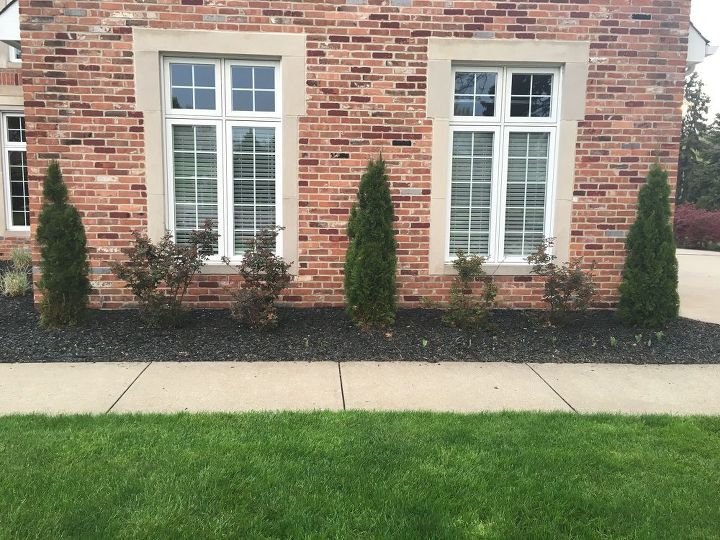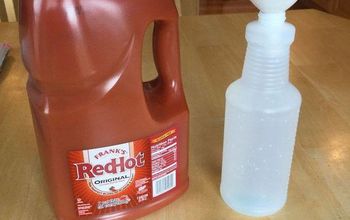Primroses are wilting in my balcony pot?
I live in Germany and the temperature now is between 3-10 degree Celsius here. At times it goes to 0 at night. I have a few primrose plants in my balcony, out of which 2 are wilting so bad. I checked the soil and I don't think I over watered them. The rest of the plants are healthy and good. Is there anyway I can save them from dying?
Related Discussions
GNATS - How to get rid of them?
Somehow my house and garden got tiny gnats that killed my fuchsia plant and fly everywhere. I have tried ALL the Web recommendations - soap and oil dishes, sand in th... See more
Marigolds growing! Should I pinch the buds?
My marigold plants are growing. I heard that pinching the buds until Autumn will allow them to grow without killing the plant. Is this true?
Growing garlic
Growing our first garlic, should we wait until the leaves are drying out before we pick it? Husband picked first one today along with our first potatoes.
How to keep mice out of your garden?
Hi everyone, I have mice in my garden destroying my vegetables and I have also noticed them in the barn and shed. Please can someone tell me how to prevent them from ... See more
What's the best flower/plant to grow in Texas?
I know that opinions vary, but what's your opinion?!I have great luck w Rosemary plants. Green all year long.
Which annual flowers make a colorful border for my house?
This year I am going to plant a colorful border using annuals. What annuals have you used or do you recommend for a border? The area is full to part sun. I am not ... See more
Is it safe to replant peony?
I've heard it might be tricky. Is it true? What is the best way to that? It's this year's plant. No flowers yet.






The plants Need more water
Here is temperature range and growing conditions that most primroses do well in:
Light
Most Primula species thrive best in partial shade, but a few do just as well in full sun. Outdoors, most primroses prefer lightly shaded areas, with dappled and indirect sunlight. Avoid too much light since it may cause leaf burn.
However, in the case of indoor primrose plants, bright light is ideal for thriving. Place potted primroses in a well-lit area indoors with a good amount of sunlight throughout the day. This is important since insufficient light may affect the plant’s flowering ability.
Soil
Primroses grow best in fertile and well-draining soil. The ideal soil pH should be slightly acidic to slightly alkaline (2). You can also amend the soil with organic matter to improve its quality and condition.
Water
Watering primroses shouldn’t be tricky. They enjoy moist soil like most plants, especially since they can be susceptible to drought. Deep watering your primrose plants regularly, ideally once a week, will make them vigorous. However, avoid overwatering since excessive moisture in the soil often leads to root rot, which is not good for them (2). Water the plants before the top surface of the soil dry out completely.
Temperature
Growing primrose flowers indoors requires a range of about 50 °F at night to 70 °F during day time (2). You can grow potted primroses indoors, provided that the night temperatures fall between 50 and 60 °F. Generally, these plants do not tolerate extreme temperatures, particularly during the growing period.
Fertilizing
Primroses grown indoors do not necessarily need fertilization (2). Still, like other garden plants, these blooms appreciate light applications of fertilizers during their growing period.
Apply a balanced, water-soluble fertilizer at half of the recommended rate every two to four weeks. Stop feeding the plants after flowering.
ref:https://florgeous.com/primrose/
Give them some water.
Hi MJ, Primroses prefer cool conditions so I don't think the cold is a problem, especially since the one is doing really well in the same conditions. Try spacing the two that are wilting out a little. They like proper air circulation. Can you see any little grubs in the soil? One of the biggest problems with sudden wilting is weevils that eat the roots. They may also be infected with botrytis or yellow asters. In that case, you'll need to throw them away. Hope they come right, they're so pretty.
Most common reasons for wilting in primroses:
Bacterial Soft Rot
Fungal Root Rots
Gray Mold
Viruses
Environmental Stresses
My first thought is Primroses love water - don't underwater them.
Primrose love moisture!
Covering to protect them from the extreme cold should help them.
They look dry. Some plants need a lot more water than others.
the soil seems very dry maybe just watering them will help
Mine will wilt with too much direct sunlight and Summer heat or from being too dry. These are very tough plants...trust me I have left them for dead being so badly wilted and with a good watering they come right back on their feet again! I always say you can't kill them!
Hi Mj, hope this helps you out, it could be a few things, but his will give you a way to check them all out, https://homeguides.sfgate.com/revive-wilted-streptocarpus-58779.html
too much water mixed with heat
Appear to be wilting from lack of water. What zone do you live in?